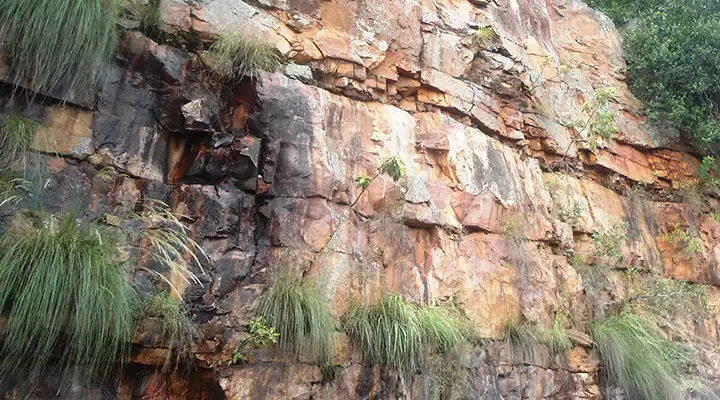The Possible Supercontinent Ur
Advertisement

Archean rock from the time of Ur
Ur is a postulated supercontinent dating from about 3 billion years ago. "Supercontinent" may mean "all the land above water" but even so, Ur was probably never larger than today's Australia. Ur may never have existed, too, because during the Archean, the Earth's mantle was about 200°C hotter than it is today. Most of the rock formations our lives are built upon couldn't have existed back then. Ur is also postulated to have existed in order to fit the evolution of the planet to certain human-proposed geological cycles. Among the bits and pieces of the theory is the idea that Ur grew and shrank regularly but existed as a recognizable entity until about 500 million years ago when it was finally broken up.
What evidences the existence of Ur most is today's location of ancient cratons in western Australia, India and Southern Africa. Measurements and calculations indicate these areas were in close proximity about 3 billion years ago during the Archean Eon. Measurements also indicate the southern boundary of Ur to now be below the Indian Ocean beaches of Antarctica, well into the now glaciated regions.
Because of the agglomeration of ancient cratons, Ur could be considered a "supercraton." About 2.5 billion years ago there was a rapid expansion of Ur as more cratons from what are now India, central Africa and Australia were accreted to the edges of the supercontinent. Toward the end of the original Ur, the supercontienent Arctica was being formed to the north from the Slave, Wyoming, Superior, Laurentia, Siberia and Baltica cratons.
The tectonic cycle of supercontinents coming together and then breaking up has occurred several times since and the last time these regions were in relatively close proximity to each other was during the time of Pangaea, a supercontinent that formed more than 2.5 billion years after Ur.
The largest parts of Ur that survive today are located in India. The photo at the top of this page shows rock from eastern India, laid down during the Archean Eon. That rock is on the edge of the Eparchean Unconformity, a zone that shows a major time gap between the rock on one side and the rock on the other (a similar unconformity is found in the basement rock of the Grand Canyon).
A supercontinent prior to Ur was possibly Vaalbara while the possible supercontinent after Ur was perhaps Kenorland.